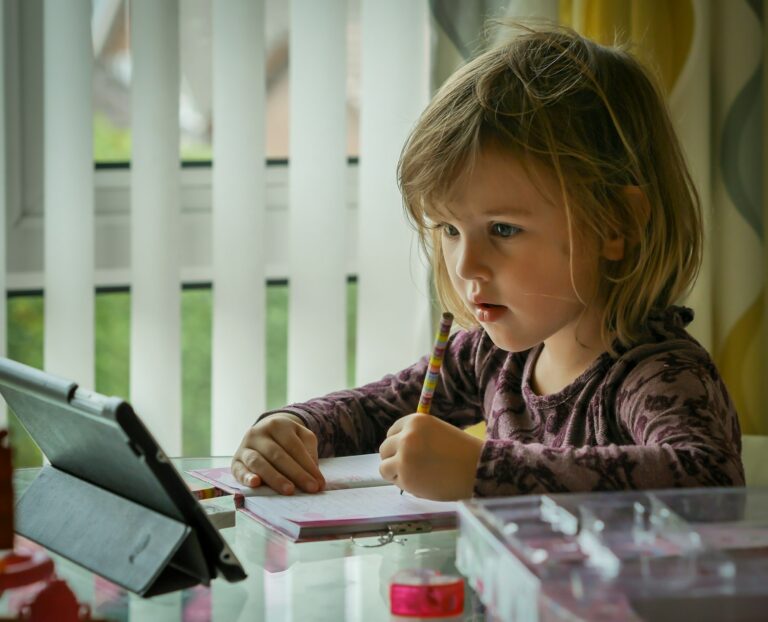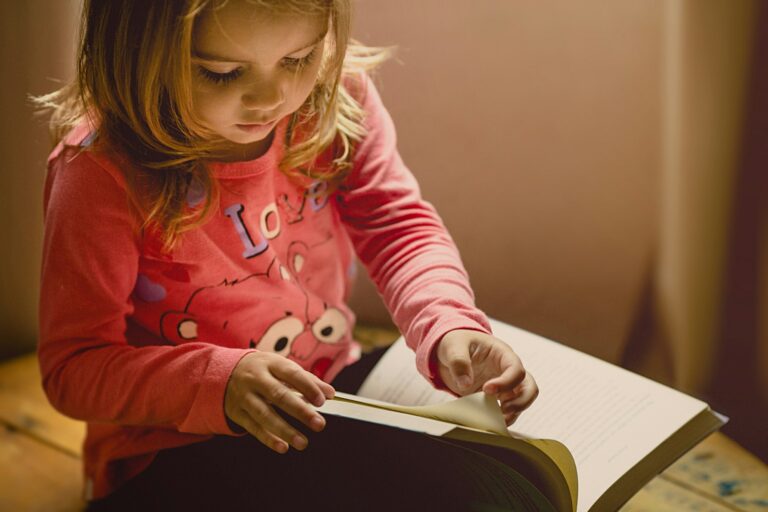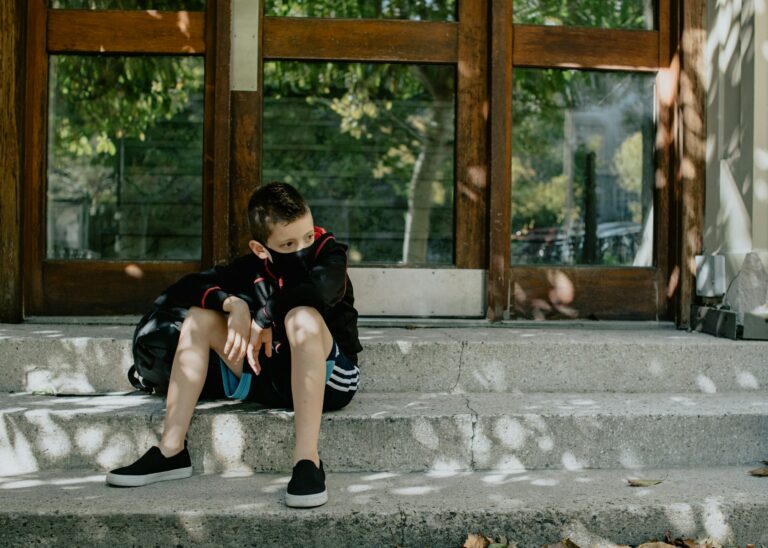Watching a five year old child shape their world with each question, leap, and burst of independence can be exhilarating—and, let’s face it, a little dizzying for parents. You may find yourself wondering, “Is my child growing the way they should? How can I help with learning or tough moments? What routines are really essential?” Concerns about language development, social skills, emotional surges, or whether you’re doing enough to nurture health and happiness in your five year old child are completely normal. Discovering answers means exploring not only the fascinating world of development, school readiness, sleep, and emotional well-being, but also the very real challenges: setting boundaries without stifling spirit, making sense of conflicting advice, adapting routines to a family’s unique rhythm.
Expect, here, a dynamic journey—one packed with up-to-date medical knowledge, practical routines, and science-backed strategies. We’ll address physical milestones, foster resilience, demystify behavioral hurdles, and spotlight clear steps for supporting your five year old child’s growth—all through a rhythm that flows between concise answers and deep dives, empathy and expertise.
Key developmental milestones for a five year old child
Children of this age brim with vitality and unpredictability—one moment performing impromptu “balancing acts” on the living room rug, the next quietly focused on laboriously writing the first letter of their name, tongue sticking out in concentration. Physically, a five year old child tends to add 2–3 inches in height and 4–5 pounds annually. The coordination surge is real: hopping, skipping, even balancing on one foot for ten seconds (not an Olympic feat, but monumental here). Many master swings, slides, and climbing frames, which not only build muscle strength but also help refine the gross motor skills that underpin everything from running to riding a bike.
Fine motor developments shake up mealtimes and craft sessions. Suddenly, spoons catch less air, buttons get fastened (sometimes on the wrong holes), and shoelaces become a battlefield of perseverance and pride. Visual perception usually stabilizes near 20/20. Meanwhile, when crayons and safety scissors take center stage, look for evolving control: copying triangles, drawing meaningful shapes, and hesitantly attempting letter formation—one of many entries into literacy.
Cognition leaps alongside the body’s growth. A five year old child will likely count to 10 or beyond with contagious enthusiasm, categorize toys by size or color, and grasp time concepts—“tomorrow,” “yesterday”—though waiting for birthdays still demands superhuman patience. Language flourishes: not just a torrent of vocabulary (often over 2,000 words now) but nuanced storytelling and the first forays into describing emotions and complex needs. Group play brings emerging rules, empathy, and a taste for fairness. Outbursts may remain, but tools to process them improve—think attempts at negotiation or requesting help before tears erupt.
Socially, friendship gains depth. It’s the age of “best friends” (switching weekly), learning to share, and the aching drama of invitations (or their absence). Home responsibilities, delight in pleasing caregivers, and the growing ease with separation from parents all reflect this surge in autonomy. Underpinning it all, a five year old child navigates and tests boundaries—benefiting from consistent guidance and gentle, matter-of-fact reminders.
Building a daily routine for a five year old child
Predictability is a potent ally for both you and your child. Mornings anchored by a consistent wake time (6:00–7:30 a.m.), followed by teeth brushing, washing, and independent dressing, can shape the tone for the entire day. Offer choices—shirt or sweater?—to encourage agency (and yes, prepare for the occasional dazzling ensemble).
Nutritious breakfast choices—think whole grains, fresh fruit, protein—fuel growing bodies and brains. Evenings demand their own rhythm, with a wind-down routine starting between 7:30–8:30 p.m. (or thereabouts, depending on family schedules and sleep needs). Aim for 10–13 hours of sleep and enforce “screen curfew” at least one hour before bed; blue light can undermine melatonin, the sleep hormone. Calming pre-bed rituals—bath, teeth brushing, reading a story—help anchor your five year old child’s sense of security.
Structured school or kindergarten settings introduce novel demands. Ease transitions by visiting classrooms in advance, meeting teachers, or packing a familiar comfort item. Routines at home can mirror those at school, reinforcing independence: using the bathroom, managing zippers, taking part in packing a snack. Lunches that combine complex carbohydrates, lean protein, vegetables, and healthy fats support sustained energy.
Afternoons might unfold with outdoor play, family walks, arts sessions, or quiet time with books—each a launchpad for connection and emotional literacy. Expect negotiation, flexibility, and the occasional resistance; these routines are scaffolding, not straightjackets, and adjusting them is part of honoring both your child’s needs and family life.
Promoting health and wellness: medical foundations every parent should know
Health for a five year old child isn’t only tracked in inches and pounds or by bursts of exuberance. Annual pediatric checkups matter—look for growth tracking, blood pressure monitoring, vision and hearing screenings, and standardized developmental assessments (which gauge whether milestones in language, motor skills, and social-emotional capacity are lining up as expected).
Immunization schedules, frequently the source of parental confusion or concern, are built around protecting against preventable illnesses—measles, mumps, and rubella, along with tetanus, diphtheria, and pertussis (via the DTaP booster), are typical for children in this age bracket. Discuss with your provider if you have questions about vaccine timing or the need for boosters before kindergarten.
Dental health demands vigilance. Twice-daily brushing with fluoride toothpaste, regular dental checkups, and occasional in-office fluoride applications minimize cavity risk (a significant concern at this age, as enamel is still developing). Diet, too, plays a major role: keep sugary snacks and juice (limit to 4–6 ounces daily) in check, focus on fruits, vegetables, dairy, whole grains, and lean proteins.
Daily personal care routines—frequent handwashing (before meals, after outdoor play), supervised bathing, and appropriate bathroom hygiene—help ward off infections. Teach “safe” and “unsafe” touches without drama but with absolute clarity. Head injuries, biking accidents, and choking incidents remain top hazards, so helmets, childproofed environments, and clear safety rules are necessary, not optional.
Regular sleep and physical activity round out the wellness portfolio. The Centers for Disease Control and Prevention (CDC) recommends one hour of moderate-to-vigorous activity per day—running, climbing, or even energetic dancing all count. Capping recreational screen time at one hour daily helps preserve circadian rhythms and make space for other activities essential to the five year old child’s well-being.
Educational readiness—laying a foundation beyond ABCs
Readiness for school pivots not just on memorizing letters or numbers, but on resilience. A five year old child benefits from practicing the rituals of self-care—independent bathroom use, managing lunchboxes, recognizing their name on a cubby. Socially, adaptability shows in following multi-step instructions, joining in group activities, offering and accepting help.
Like all journeys, the transition to school is varied. Some children leap; others step tentatively. Supporting this process might look like regular visits or playdates with future classmates, rehearsing routines, or reading stories about starting school.
Play-based learning trumps rote instruction at this age. Board games teach turn-taking, puzzles foster perseverance, pretend play seeds creativity and flexible thinking. A selection of art supplies invites messy exploration—crayons, paints, child-safe scissors—boosting both fine motor skills and confidence. When your five year old child asks “why,” try answering warmly or turning the question around to prompt critical thinking—a skill prized both in and far beyond the classroom.
If you sense delays—significant trouble with speech, understanding social cues, gross or fine motor skills, or persistent difficulty handling routines—consider seeking a developmental assessment. Early intervention, grounded in robust evidence, can markedly improve outcomes.
Activities to encourage growth and learning
A five year old child craves movement, challenge, and novelty. Outdoor play strengthens bodies and sharpens coordination. Structure might include organized sports (with proper safety gear), while freer play—running, jumping, bike rides—invites children to test limits at their own pace. Nature walks offer chances to investigate and question (“Why are leaves green?”), practicing observation and patience.
Cognitive stimulation blossoms through simple science experiments, storytelling, and games like “Simon Says” or memory cards. Singing, dancing, and group activities foster cooperation and emotional literacy. Creative art projects—painting, collaging, building—boost both dexterity and pride. Small chores—setting the table, watering plants, sorting laundry—provide tangible experiences of autonomy and responsibility.
Nurturing independence and building confidence
Independence does not emerge in a vacuum. For your five year old child, being entrusted with small, meaningful tasks is transformative: putting shoes by the door, making a snack selection, or even folding washcloths. Praise the effort, not just the outcome—confidence rises out of perseverance, not perfection.
Navigating boundaries is ongoing. Explain household rules clearly, offer choices when appropriate, and use short, gentle timeouts or logical consequences for repeated infractions. Positive reinforcement—“You worked so hard at cleaning up!”—often has more staying power than criticism. Talk through problems; help your child brainstorm solutions. Communication tools and emotional coaching are far more effective than shouting or punitive discipline.
Respect and patience are learned through adult modeling. When frustrations boil over (tantrums, whining, testy negotiations), maintain consistency in your response, focus on “repair” rather than shame, and foster the language of feelings and needs. Your five year old child might not be able to articulate, “I’m overwhelmed by the noise,” but you can help decode these signals together, setting the stage for mature emotional regulation down the road.
Family and social dynamics
The social microcosm of family and friends becomes a powerful arena for growth and challenge. Sibling relationships can swing between alliance and rivalry in seconds—joint play, cooperative tasks, and respectful conflict resolution are teachable moments. Lightly guide during power struggles; celebrate cooperation. With peers, encourage playdates and shared experiences. Social skills—fairness, sharing, resilience after disappointment—are laboriously mastered now, often in messy, nonlinear fashion.
Big changes—new baby, house move, changes in caregivers—create ripples that demand careful, honest conversation. Prepare your five year old child for transitions by maintaining routines where possible, visiting new spaces in advance, and fielding questions with warmth and honesty. Stay engaged with school life, and set aside time after busy days for shared activities—reading, chatting, or exploring the outdoors together.
Navigating behavioral challenges
Outbursts, defiance, tears that arrive out of nowhere after a “good day”—these are par for the course with many five year old children. The emotional cortex is still a work in progress. Consistent boundaries, logical natural consequences, and a focus on respectful, calm communication all reinforce emotional security.
A five year old child will, at times, push and probe—testing what happens if they ignore instructions or break a rule. Respond, not with harshness, but with steady predictability. Notice frequent aggression, withdrawal, loss of previously acquired skills, or behaviors that repeatedly interfere with learning or relationships? Reach out to your healthcare provider; early intervention can make school years more successful and less stressful for everyone.
Speech that remains unintelligible, difficulty with group routines, or ongoing troubles in fine or gross motor tasks warrant a professional evaluation—support here is not about labeling, but about unlocking your five year old child’s full potential through timely, evidence-based help.
Prioritizing safety for a five year old child
Daily life is peppered with hazards for the curious. Lock away cleaners, medications, and sharp tools; cover electrical outlets, secure heavy furniture, and use gates at stairs. Teach your five year old child essential safety details: full name, parents’ numbers, basic address. Practice what to do if lost or approached by a stranger, and reinforce “safe” touch principles.
Outdoors, vigilance saves lives: helmets on bikes and scooters, strict street-crossing rules (“hold hands, look both ways”), and constant supervision near water. Discuss fire safety—smoke detectors, evacuation plans—and check for choking dangers or window falls. Routine handwashing (especially post-outdoor-play and pre-meals) can block many common infections. When emergencies are rehearsed calmly, children gain confidence—not anxiety.
Key Takeaways
- Celebrate the unique journey of your five year old child: every physical feat, new word, and social leap matters
- Consistent routines—structured mornings, nourishing meals, and stable bedtimes—foster resilience and well-being
- Annual checkups, up-to-date immunizations, and preventive dental care buffer against a host of health risks
- Physical and imaginative play are learning accelerators; every game or craft session is a lesson in problem-solving, empathy, and perseverance
- Emotional growth and independence flourish through clear boundaries, practical responsibilities, and loving, matter-of-fact communication
- Watch for signs that may indicate the need for a developmental assessment, and seek professional guidance as needed
- Prioritize environmental safety, both inside and outdoors, matching your child’s expanding skills with your vigilance
- Broad resources exist to support families—professional, medical, educational—and adaptation is part of healthy parenting
- Discover personalized advice and free health questionnaires for your child by downloading the Heloa app—an accessible way to stay informed and supported on your parenting journey
Your five year old child is growing at their own unique tempo—patience, attentive presence, and timely support remain your best tools as you nurture confidence and curiosity day by day.
Questions Parents Ask
How can I help my five year old child adapt to changes or transitions?
Changes like starting school, moving, or welcoming a new sibling can be significant for a five year old. You may notice your child expressing their emotions more strongly or showing signs of clinginess. To support them, it’s helpful to maintain routines wherever possible and to talk ouvertly about what’s coming—in simple, reassuring words. Visiting new places together, reading stories about similar changes, or practicing what will happen can all support smoother adaptation. Remember, every child reacts in their own way, and it’s perfectly normal if the adjustment takes a little time.
What are some behavioral red flags to watch for in a five year old child?
While every child grows at their own pace, certains comportements peuvent indiquer qu’un suivi supplémentaire serait bénéfique. Rassurez-vous, il ne s’agit pas forcément d’un problème sérieux, mais il est important d’y prêter attention. Red flags may include consistent trouble interacting with other children, ongoing difficulty following directions, frequent and intense emotional outbursts, or a sudden loss of previously acquired skills. If you notice these signs, consider gently seeking advice from a healthcare professional; early support can make a meaningful difference for your child and your family.
How can I encourage my five year old child to develop positive friendships?
Building early friendships helps children learn about sharing, empathy, and cooperation. You can encourage these connections by arranging regular playdates, observing group interactions, and gently guiding your child through moments of conflict or disappointment. Encourage discussions about their feelings and offers words for emotions they may not yet understand. Celebrate the positives—small acts of kindness, inclusive play, or overcoming shyness—while always acknowledging that some days will be smoother than others. This caring environment can give your child the confidence to nurture bonds and enjoy social experiences.
Further reading:









